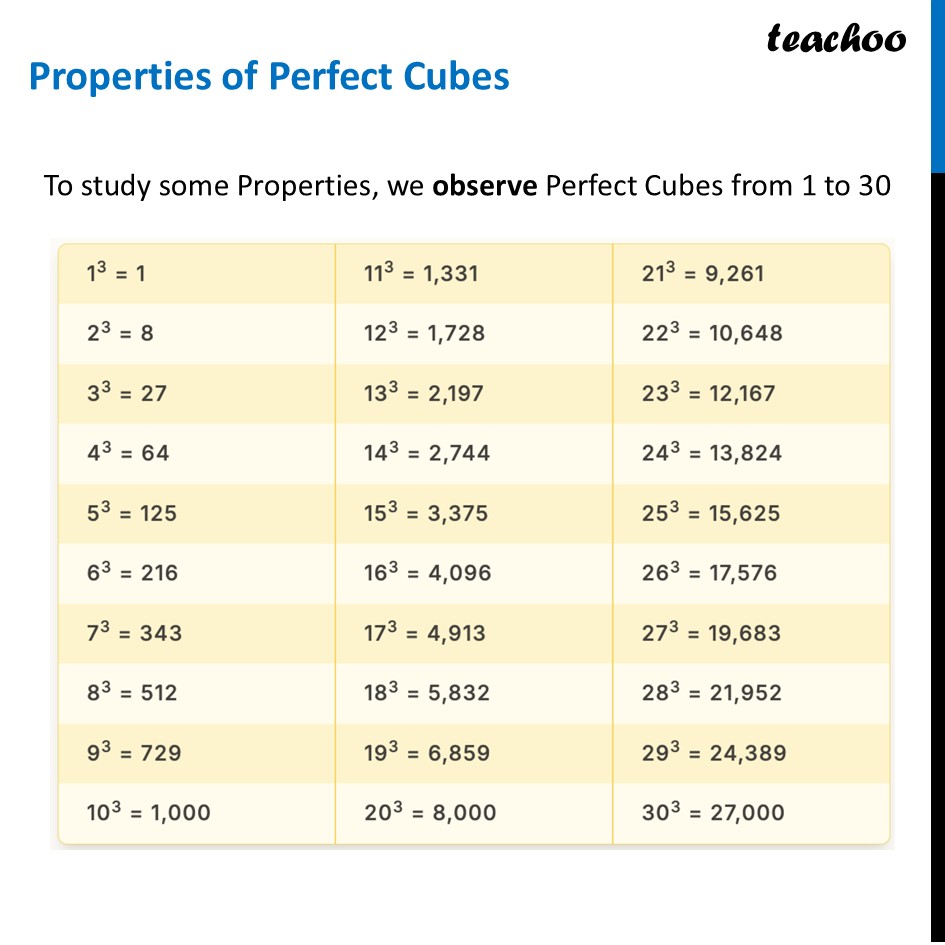
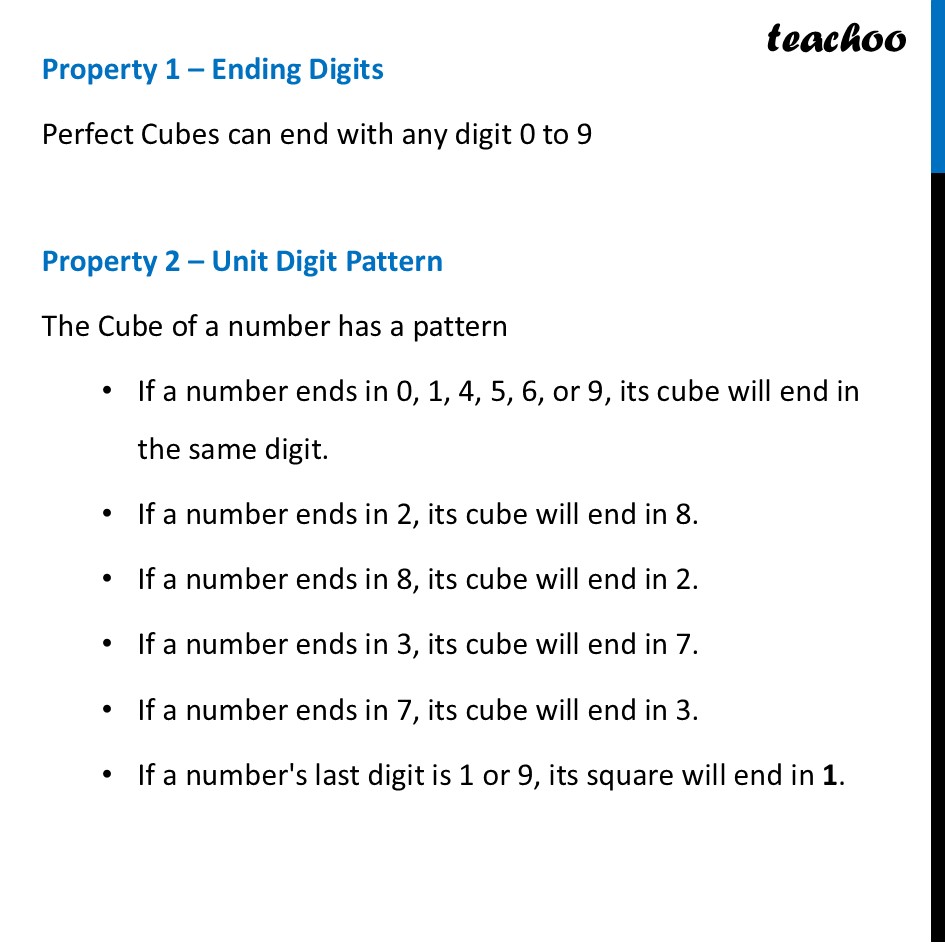
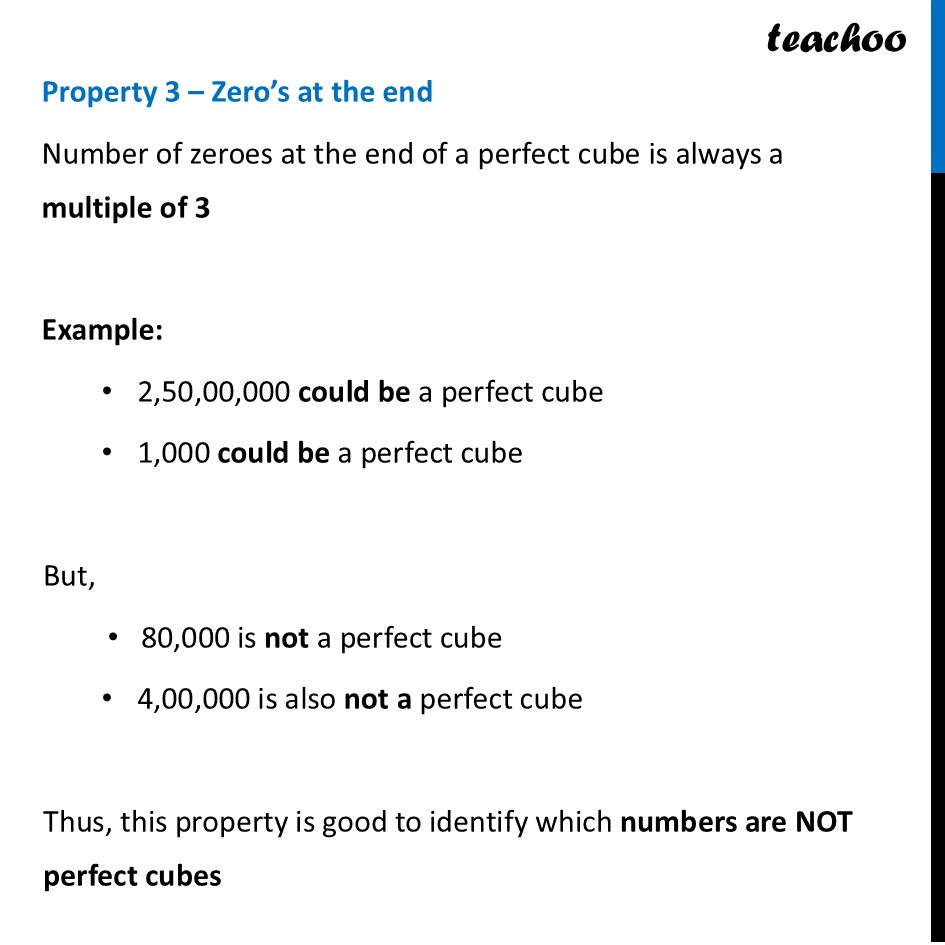
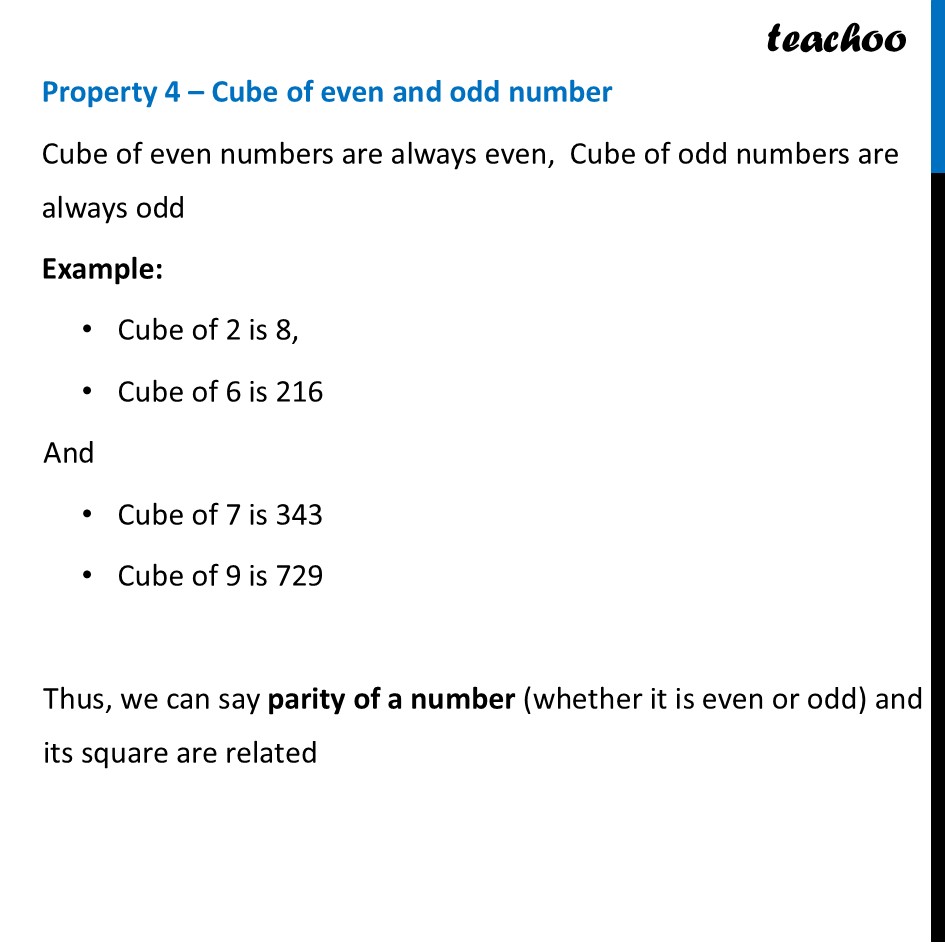
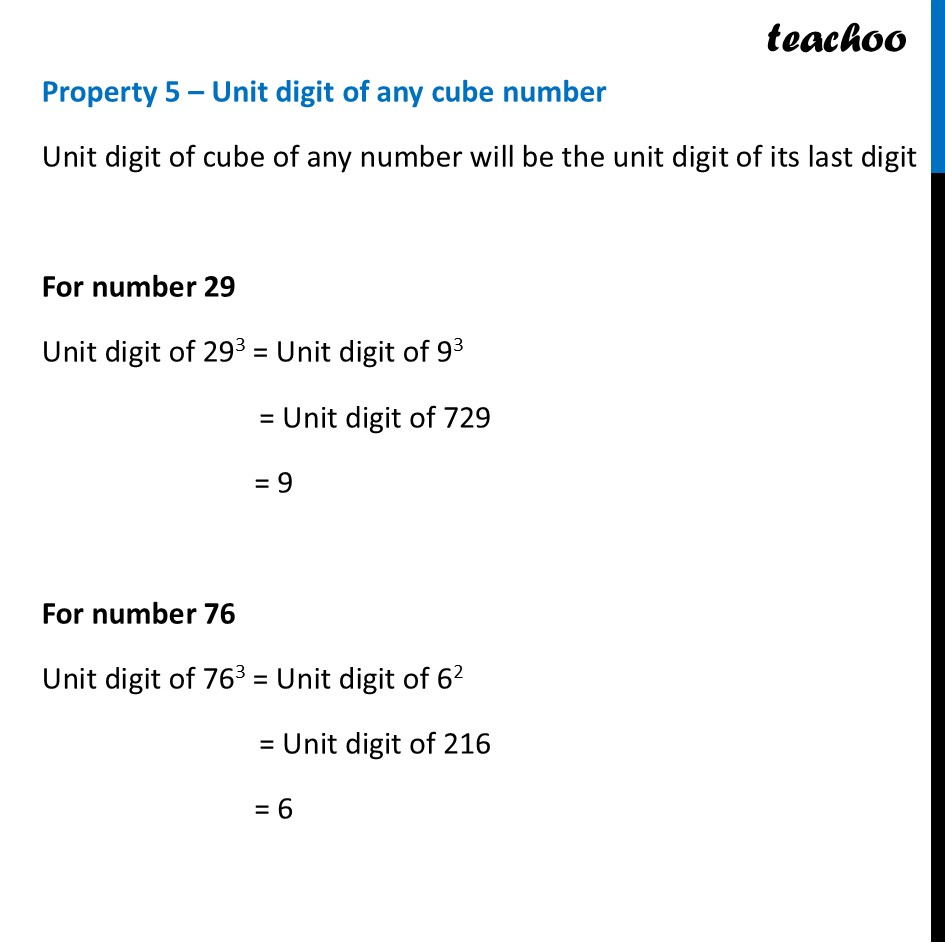
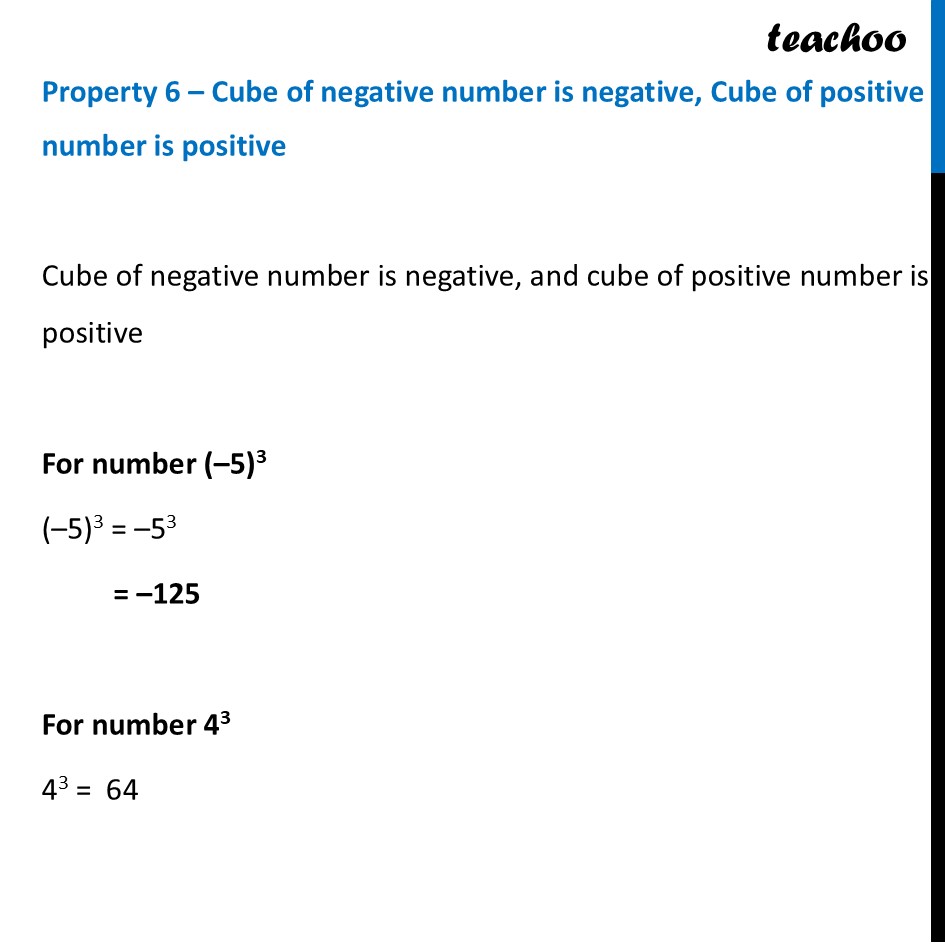
Perfect Cubes - and its Properties
Perfect Cubes - and its Properties
Last updated at July 30, 2025 by Teachoo






Transcript
Properties of Perfect Cubes To study some Properties, we observe Perfect Cubes from 1 to 30 Property 1 – Ending Digits Perfect Cubes can end with any digit 0 to 9 Property 2 – Unit Digit Pattern The Cube of a number has a pattern If a number ends in 0, 1, 4, 5, 6, or 9, its cube will end in the same digit. If a number ends in 2, its cube will end in 8. If a number ends in 8, its cube will end in 2. If a number ends in 3, its cube will end in 7. If a number ends in 7, its cube will end in 3. If a number's last digit is 1 or 9, its square will end in 1. Property 3 – Zero’s at the end Number of zeroes at the end of a perfect cube is always a multiple of 3 Example: 2,50,00,000 could be a perfect cube 1,000 could be a perfect cube But, 80,000 is not a perfect cube 4,00,000 is also not a perfect cube Thus, this property is good to identify which numbers are NOT perfect cubes Property 4 – Cube of even and odd number Cube of even numbers are always even, Cube of odd numbers are always odd Example: Cube of 2 is 8, Cube of 6 is 216 And Cube of 7 is 343 Cube of 9 is 729 Thus, we can say parity of a number (whether it is even or odd) and its square are related Property 5 – Unit digit of any cube number Unit digit of cube of any number will be the unit digit of its last digit For number 29 Unit digit of 293 = Unit digit of 93 = Unit digit of 729 = 9 For number 76 Unit digit of 763 = Unit digit of 62 = Unit digit of 216 = 6 Property 6 – Cube of negative number is negative, Cube of positive number is positive Cube of negative number is negative, and cube of positive number is positive For number (–5)3 (–5)3 = –53 = –125 For number 43 43 = 64